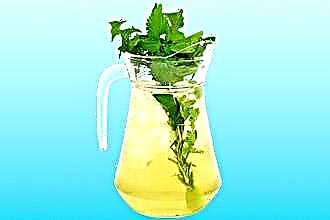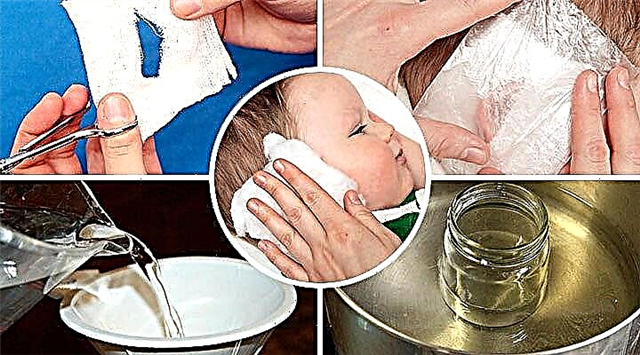Vegetovascular dystonia is understood as a whole complex of symptoms characteristic of a functional disorder of the autonomic nervous system. A common symptom is the occurrence of chest pain with VSD. The lack of correction of such complaints leads to a decrease in human performance, the emergence of chronic diseases. Therefore, timely diagnosis of the problem plays one of the key roles in the successful recovery of such a patient.
Causes of VSD
- weakening of the body due to stress, poor nutrition, sleep disturbances, overwork, bad habits;
- allergies;
- diseases of the endocrine, nervous and cardiovascular systems;
- restructuring of the hormonal background;
- acute and chronic infectious processes;
- hypodynamia;
- psychosomatic factor;
- osteochondrosis;
- congenital and acquired liver diseases;
- gastritis;
- ulcers of the stomach and duodenum;
- colitis;
- dyskinesia of the biliary tract.
For more information about the VSD syndrome (causes, nature of the course and the correct route of the patient), read our article devoted specifically to these issues.
The autonomic nervous system of the child enhances the work of the sympathetic-adrenal system (SAS), which gives the growing body the right amount of energy. SAS with VSD in imbalance, and this leads to memory impairment, lethargy, headaches; there are interruptions in the work of the heart, irritability appears. The course of the disease in adults is similar, but symptoms of organ damage (shortness of breath, abdominal pain, temperature fluctuations) are added.
Cardiac manifestations of vegetative vascular dystonia
The forms of pathology are different and depend on which organ is suffering from a disorder of the autonomic nervous system. Very often it is the heart that takes the brunt. Define typical cardiosymptoms with VSD:
- cardialgia;
- cardiopalmus;
- a feeling of interruptions in the work of the heart; ECG shows sinus tachycardia or bradycardia, supraventricular extrasystole.
These symptoms are characteristic of the cardiac type of VSD, which occurs in 90% of patients. Their blood pressure readings also indicate dysfunction of the autonomic nervous system. Hypertensive and hypotensive types of pathology are diagnosed. In the first case, blood pressure is high, but at the same time it quickly returns to normal, as a result of which the person does not feel discomfort. With a hypotonic course, the pressure drops, skin pallor and fatigue appear.
Cardialgia is the most common symptom in VSD. Pain in the heart area significantly differs from heart pains of a different nature in frequency, provocative factor and intensity.
Despite a number of symptoms, many doctors and scientists are skeptical about dystonia. Some take it for a psychogenic disorder (somatoform, anxiety or depressive), while others consider pathology as a separate syndrome in the clinic of certain diseases. As evidence of this, they cite undifferentiated connective tissue dysplasia in adolescents, which is characterized by its own semiotics, and the IRR is a key component. The fact of the occurrence of dystonia among children with a small anomaly of heart development has been proven.
Chest pain as one of the main symptoms of VSD
Cardiac pain in dystonia is distinguished by a number of features. They do not depend on physical activity and body position, are long-lasting, during instrumental examination they do not mate with visible defects; aching in nature, stitching, sharp, constricting and burning; usually localized behind the sternum and in the left half of the body.
Stitching pains in the heart with VSD are very common. This is a common sign of high blood pressure. They are accompanied by shortness of breath, hyperemia, edema and throbbing in the head. With increased blood pressure, the cutting nature of the pain syndrome is possible, which leads to a feeling of fear of death. The severity of such pain is due to vasospasm.
Low pressure is characterized by a squeezing sensation due to relaxation of the arteries, which leads to a decrease in blood flow. Dizziness and weakness appear.
The most common option is aching pain in the heart with VSD, which indicates a decrease in blood pressure. It is accompanied by frequent bouts of weakness and does not require treatment. The person needs to be distracted from work or take a sedative. When a diagnosis is made with this nature of pain, osteochondrosis is excluded, because the second is manifested by sharper sensations in the chest area. Aching pains cause depression, mood deterioration.
A feature of cardialgia in an ANS disorder is moderate or weak strength. Severe heart pain with VSD is uncommon and usually burning in nature. Such symptoms indicate an increased tension of the nervous system and pass after psychoemotional rest. The patient is taking non-steroidal analgesics and sedatives.
Heart pain in VSD is characterized by neurogenic, cardio-neurotic or endocrine mechanisms of occurrence. But in each of the cases, a person should calm down as quickly as possible, take symptomatic medications and consult a doctor in the future.
Irradiation of pain syndrome in VSD is weak, but the pain is sometimes carried to the left or right half of the body. Cases are described when cardialgia has spread to the lower jaw, although this is not typical for VSD and more often indicates an attack of angina pectoris. The fact of localization of this cardiosymptoma in the region of the left scapula is possible.
Conclusions
Thus, cardialgia with VSD is a common symptom. The nature of the manifestation depends on the severity of the pathology and the individual characteristics of the human body. It differs in a number of distinctive features, but there are also atypical forms. This makes it possible to preliminarily differentiate dystonia from other cardiovascular diseases.
A doctor of any specialization should be able to diagnose VSD, because over time it leads to life disorientation. The patient, on the other hand, should not ignore such symptoms in order to improve the quality of life.



